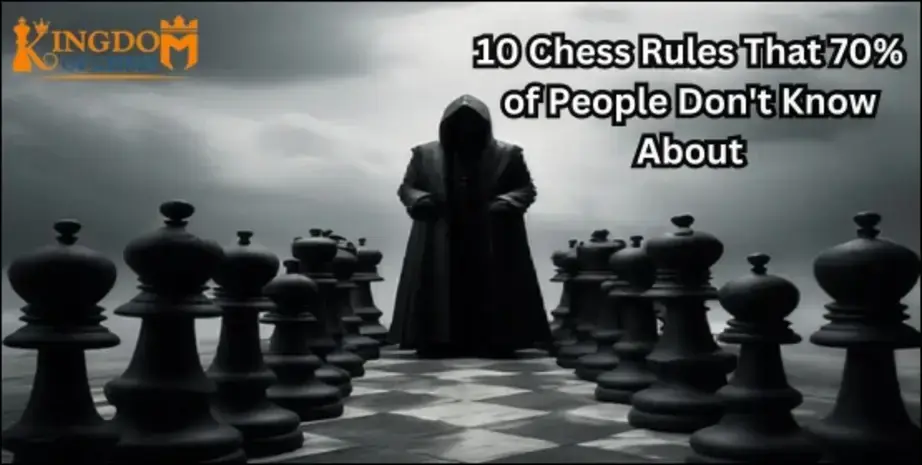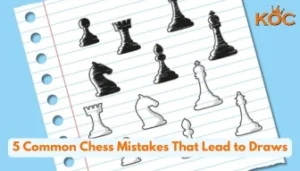10 Chess Rules
Chess is a game of strategy and skill that has been played for centuries. While many people know the basic rules, there are several lesser-known rules that can significantly impact the game.
Here are ten chess rules that most people aren’t aware of:
1. En Passant
The en passant rule allows a pawn that moves two squares forward from its starting position to be captured as if it had only moved one square. This capture must be made immediately on the following move.
Example: If you move your pawn from e2 to e4 and your opponent has a pawn on d4, they can capture your pawn by moving their pawn to e3.
2. Castling
Castling is the only move in chess where you can move two pieces at once: the king and a rook. The king moves two squares towards a rook, and the rook moves to the square next to the king. Conditions include:
- The king and rook haven’t moved before.
- No pieces are between them.
- The king isn’t in check and doesn’t move through or into check.
Types of Castling:
- Kingside Castling (O-O): The king moves two squares towards the kingside rook, and the rook moves to the square next to the king.
- Queenside Castling (O-O-O): The king moves two squares towards the queenside rook, and the rook moves to the square next to the king.
3. Pawn Promotion
When a pawn reaches the opposite end of the board, it can be promoted to any piece (except a king). Most players choose a queen, but it’s possible to choose a knight, bishop, or rook. This can change the dynamics of the game.

Strategic Use: Sometimes promoting to a knight instead of a queen can be more advantageous, especially if it allows for a check or avoids a stalemate.
4. Threefold Repetition
If the same position occurs three times, with the same player to move and all possible moves the same each time, a player can claim a draw. This rule prevents endless loops.
Practical Example: Repeating moves can be a strategic way to secure a draw when in a losing position.
5. Fifty-Move Rule
If fifty moves are played by each side without any pawn movement or capture, the game can be declared a draw. This rule helps prevent games from dragging on indefinitely.
Historical Insight: This rule has been crucial in many drawn endgames where no progress can be made by either player.
6. Insufficient Material
If neither player has enough pieces to force a checkmate, the game is declared a draw. For example, a lone king versus a lone king or a king and bishop versus a king.
Typical Scenarios:
- King and bishop vs. king.
- King and knight vs. king.
- King and two knights vs. king.
7. Touch-Move Rule
If a player touches a piece, they must move it if it’s a legal move. If they touch an opponent’s piece, they must capture it if possible. This rule emphasizes the importance of careful planning and decision-making.
Grandmaster Insight: Many top players, like Garry Kasparov and Magnus Carlsen, are known for their meticulous attention to this rule, often keeping their hands behind their backs to avoid accidental touches.
8. The Stalemate
A stalemate occurs when a player has no legal moves and their king is not in check. This results in a draw. It’s an important defensive strategy to avoid losing in a tough position.
Defensive Technique: Grandmasters like Bobby Fischer have used stalemate to their advantage to escape from seemingly lost positions.
9. The 75-Move Rule
An automatic draw is declared if 75 moves are played by each side without a pawn move or capture, regardless of player claims. This rule is similar to the fifty-move rule but is enforced automatically.
Long Games: This rule ensures that exceptionally long games eventually end, maintaining fairness and preventing fatigue.
10. Resignation
A player can resign at any time, conceding the game to their opponent. This is often done when a player sees no viable way to avoid checkmate or a significant material loss.
Respect in Chess: Resigning is a sign of respect for the opponent’s skill. Many great players, such as Anatoly Karpov, have resigned gracefully in lost positions.
Chess Legends and Their Mastery of Rules
Players like Bobby Fischer, Garry Kasparov, and Magnus Carlsen are famous not only for their strategic prowess but also for their deep knowledge of the rules. Their mastery of every aspect of the game has led them to become some of the greatest chess players in history.
Bobby Fischer: Known for his deep understanding of the game and innovative strategies, Fischer was also meticulous about rule details, which gave him an edge over his opponents.
Garry Kasparov: His legendary matches, including the ones against IBM’s Deep Blue, showcased his comprehensive grasp of chess rules and tactics.
Magnus Carlsen: The reigning world champion, Carlsen’s intuitive playstyle and command over all aspects of the game, including these lesser-known rules, make him a formidable opponent.
Final Words
These ten chess rules might not be well-known, but they are crucial for anyone looking to improve their game. By familiarizing yourself with these rules, you can better navigate complex situations and outmaneuver your opponents. Remember, chess is not just about knowing how to move the pieces; it’s about understanding the intricacies of the game.
So, next time you play, keep these rules in mind and see how they can change your strategy and improve your game. Happy playing!






